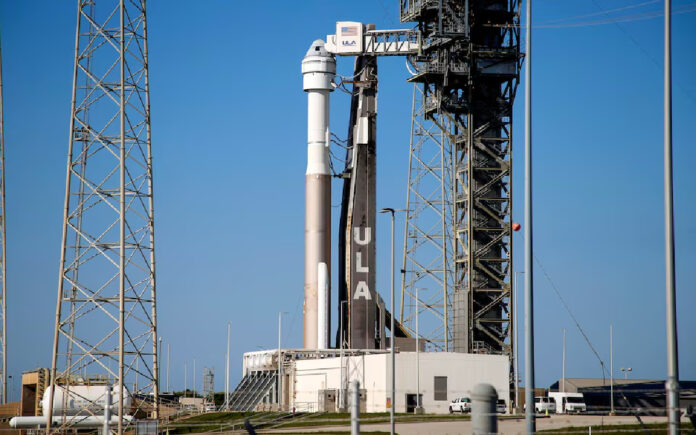Cape Canaveral: Boeing’s highly anticipated Starliner astronaut capsule is on the brink of its inaugural crewed test flight, marking a significant milestone in the aerospace giant’s quest to rival Elon Musk’s SpaceX in the realm of astronaut launches.
Scheduled for liftoff at 12:25 p.m. ET (1625 GMT) from NASA’s Kennedy Space Center in Florida, the CST-100 Starliner will be propelled by an Atlas V rocket, a joint venture of Boeing and Lockheed Martin under the United Launch Alliance (ULA).
The mission had faced setbacks, with a May 6 countdown halted just two hours before launch due to a faulty pressure valve on the Atlas rocket. Subsequent issues, including a helium leak and propulsion system concerns on Starliner, have since been rectified, according to statements from Boeing and NASA.
“This is a test flight; we know we’re going to learn some things,” remarked Mark Nappi, Boeing’s commercial crew vice president, during a news conference on Friday.
Boeing, a stalwart NASA contractor, has historically constructed modules for the International Space Station (ISS) and rockets for lunar missions. However, Starliner represents its first endeavor in building an operational spacecraft, beset by software challenges, technical glitches, and program management reshuffles.
In contrast, SpaceX has emerged as NASA’s go-to transportation provider to orbit, ferrying astronauts to and from the ISS since 2020 with its Crew Dragon capsule. NASA seeks to diversify its options for crew transportation, aiming for multiple U.S. spacecraft capable of reaching the ISS alongside Russia’s Soyuz rocket.
Also Read | New Caledonian Fern Breaks Genome Size Records
Starliner’s inaugural crew includes NASA veterans Barry “Butch” Wilmore, a retired U.S. Navy captain, and Sunita “Suni” Williams, a former Navy test pilot. Together, they boast over 500 days of spaceflight experience across multiple ISS missions.
Wilmore will serve as commander for Saturday’s flight, with Williams in the pilot seat. While Starliner is designed for autonomous operation, the crew can take manual control if needed. The mission entails practicing manual maneuvers en route to the space station, where the capsule will dock for at least eight days before returning to Earth.
Also Read | Deadly Heatwave in Mexico Claims Over 60 Lives
In case of a delay in Saturday’s launch attempt, backup opportunities are available on subsequent days. However, prolonged delays could necessitate component replacements, potentially causing weeks or months of setback due to scheduling conflicts with other ULA missions and ISS operations.
If successful, the capsule will rendezvous with the space station after approximately 26 hours of flight, docking with the orbiting outpost some 250 miles (400 km) above Earth. Following their stay, Wilmore and Williams will return to Earth via parachute and airbag-assisted landing in the U.S. Desert Southwest, marking a historic first for a crewed NASA mission.



